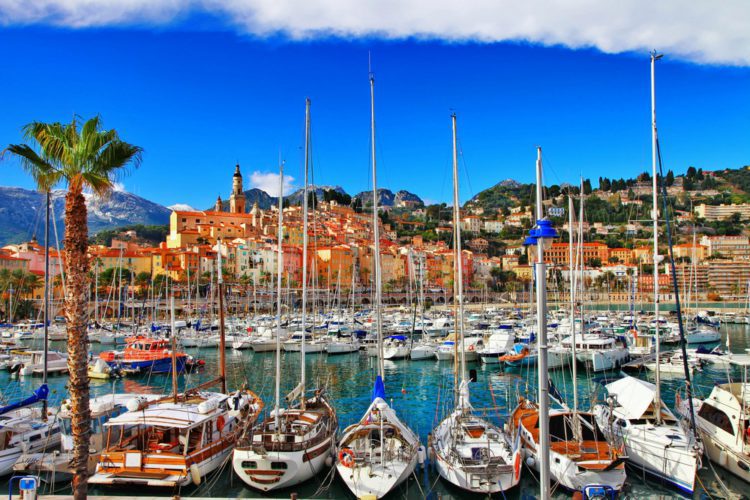Although Cannes is known to everyone, it is a relatively small city. You can get acquainted with its most interesting attractions in a short time. But for this, you need to carefully plan your route, figure out where the cafes are to have a snack and a little rest. It is best to seek the help of a professional guide who will organize a city tour according to your wishes. What to see in Cannes in one day? Let’s talk about the most interesting places.
Saint Michael the Archangel Church

For a long time, there was only one Russian Orthodox church on the vast lands of the French Riviera — in Nice. Finally, in 1886, Alexandra Tripe set up a small church on her villa’s grounds. Soon, it could no longer accommodate all those wishing to pray. When Grand Duchess Anastasia Mikhailovna arrived in the city with her entourage three years later, it became clear that the problem needed to be solved.
Archpriest Grigory Ostroumov began to lobby for the construction of a church. A piece of land was allocated, and benefactors started donating money. In 1894, the foundation of the church in honor of Archangel Michael was laid. Parishioners donated valuable items: church utensils made of gold and silver, expensive banners, and ancient icons painted by famous French artists.
To this day, the main decoration of the church is an icon-painting by Lemott, depicting the Virgin Mary with the Child, Equal-to-the-Apostles Prince Vladimir, and Saint Olga. The construction works were overseen by French architect Nouveau, and by 1894 the new church opened its doors. Up to 400 people could pray here. Today, the church is a beautiful historical monument worth seeing.
Martinez Beach
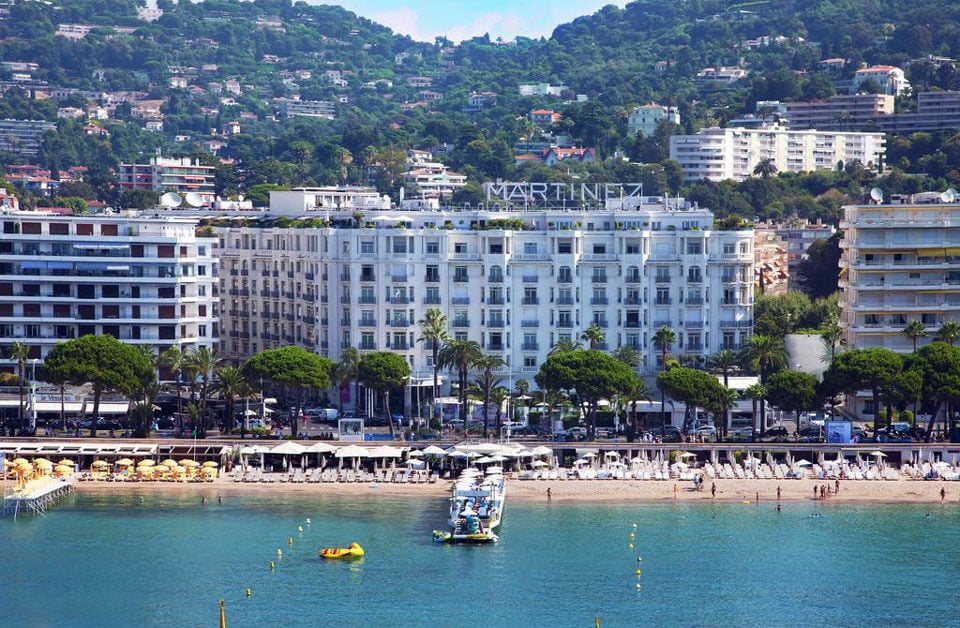
Martinez Beach, the largest on the Croisette promenade, is private and belongs to the hotel of the same name. Beautiful white sand and well-developed infrastructure attract both locals and guests of Cannes. Here you can see 400 sunbeds and a modern pontoon extending far into the sea. The rental cost is quite high, as the hotel is considered upscale.
A sunbed on the pontoon will cost around 2,000 rubles in domestic currency. A spot on the shore will be a bit cheaper. Opportunities for water sports are available, and there is a restaurant known for its cuisine. The focus here is on Mediterranean cuisine and seafood dishes.
In the evenings, tables are also set up on the pontoon: you can order snacks, wine, and sit here. But the main reason tourists come here is that celebrities often visit this beach. They usually allow themselves to be photographed and sometimes even give autographs.
Casino Barriere Les Princes

The famous gambling house is open daily. It opens at 10 AM and closes at 3-4 AM, depending on the day of the week. You can visit the casino from the age of 18. There is a general hall and a special VIP area (if you want to make higher bets). The currency is the euro. In the casino, you will see 21 gaming tables.
There are English roulette, Texas hold’em, sic bo, and other popular games, as well as over 300 modern slot machines. If you are a novice, inexperienced in games, it is recommended to start with them. You can risk a small amount but fully experience the excitement felt by all visitors to this establishment.
The casino was designed by Pascal Deprez, who aimed to give the establishment a luxurious look. He used dim lighting and contrasting tones for this purpose. Magnificent draperies, gold leather, and carpets create an unforgettable impression. Therefore, it is worth coming here just to admire the setting. Moreover, there is a high chance that you will meet a celebrity here.
Church of Our Lady of Good Voyage
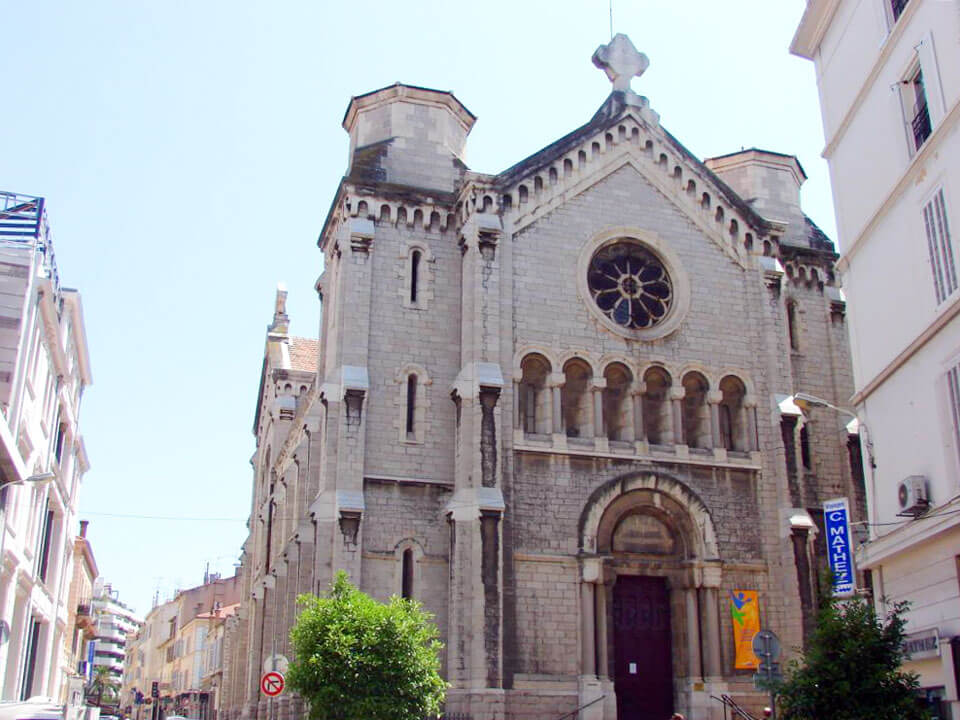
This church is located in the city center, not far from the Palais des Festivals. Once, in the 16th century, there was a chapel here. It was built so that the townspeople could pray for deliverance from the plague epidemic. It was popularly called “Our Lady of the Sands” because there were dunes nearby. Fishermen’s huts clustered around the modest chapel. And here Napoleon set up his camp when he escaped from Elba.
From here began his triumphant march to Paris, the famous “100 days.” Cannes then sided with Napoleon without resistance. Fishermen also prayed in the chapel before going out to sea. Therefore, the name was born. The church itself was built at the end of the 19th century, in 1879.
Gray stone was used for its construction. Architect Laurent Viane adhered to a strict Neo-Romanesque style. But funds were scarce. So the bell tower and two more towers were never built. Inside the church, you can see very beautiful stained glass windows. It was in this church that many noble people who lived in Cannes were married and buried.
Palais des Festivals et des Congrès
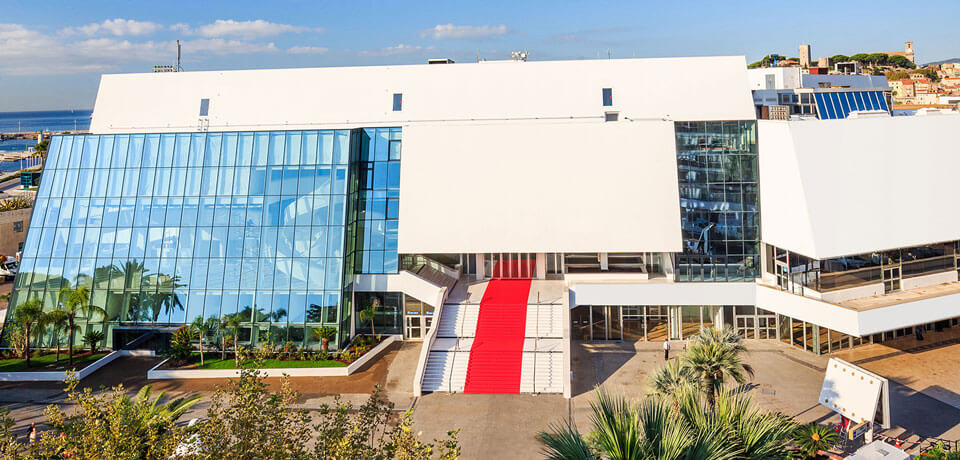
The palace resembles a huge beautiful cruise liner. It looks especially impressive in May when the world-famous film festival takes place. The wide staircase is covered with a red carpet, and people come here to meet celebrities.
At other times, you won’t see any carpets, and instead of movie stars, ordinary tourists pose for photos. The palace is one of France’s main attractions, inextricably linked with the history of world cinema. Here is also the Walk of Fame. On metal tiles, you can see the handprints of the most famous movie stars.
The festival palace was built in 1982 based on designs by architects Druet and Bennett. Its area exceeds 28,000 m2. From the terraces on the upper floors, you can see the city promenade, the islands, and the old historical part of the city. Film screenings, conferences, and exhibitions are held in the palace. There are also a restaurant, nightclub, and casino with roulette and slot machines.
Walk of Fame
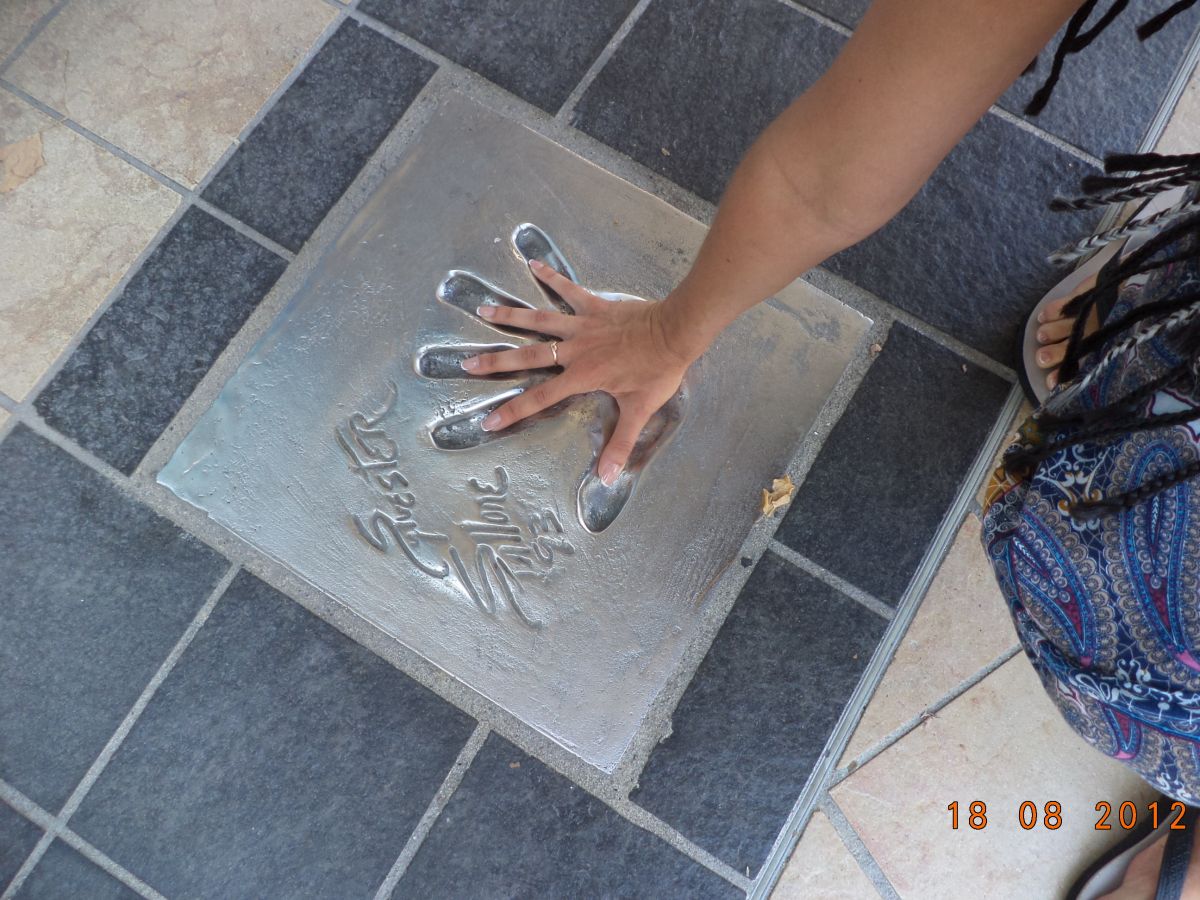
You might not immediately notice the Walk of Fame next to the Festival Palace. There are no trees or other plantings. On the esplanade of Georges Pompidou, you will see tiles with handprints. This is the famous Walk of Fame. There are similar ones in other countries.
For example, in the USA, in Hollywood. But there it looks flashy and bright, while here the tiles look quite modest. Locals lament that the tiles can be walked on, and over time, they deteriorate from this. Famous people who come to the city leave their handprints in clay. The molds are sent to Vallauris, cast in plaster, and then the corresponding reliefs are made in a foundry from steel.
The original plaster is kept in the Festival Palace. Here you can see the handprints of Charlie Chaplin and Sophia Loren, Jean-Paul Belmondo and Catherine Deneuve, Sharon Stone and Tatiana Samoilova. The Walk of Fame was opened in 1985, and today it features the handprints of more than 400 movie stars, directors, and other celebrities.
Museum of Childhood
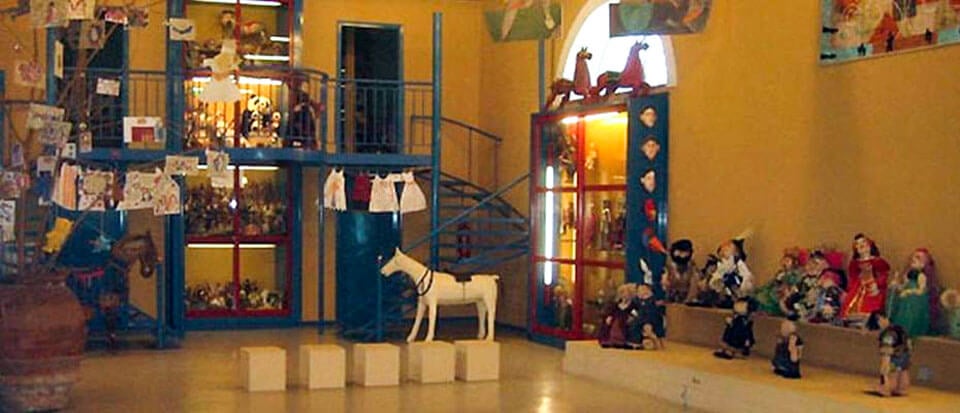
There are not many places in Cannes to visit with children. Mostly, people come here to enjoy beach rest, visit nightclubs, and casinos. But there is a very unusual museum that will bring joy to both children and their parents. It is the Museum of Childhood. Mainly, it features dolls — about 600 specimens.
These are old toys from the era of Napoleon III. That is, they are about 300 years old. There are also exhibits from a later period. Additionally, there is doll clothing, shoes, furniture. And other interesting items that our imagination easily associates with the world of childhood. Here you can learn many interesting facts about the processes of doll-making and the lives of French doll-makers.
Each toy has its own history, which will also be told here. The museum has been operating for several decades and attracts both adults and children. You can visit it daily, except for Sundays and Mondays (days off) from 2 PM to 6 PM.
Chapel of Mercy
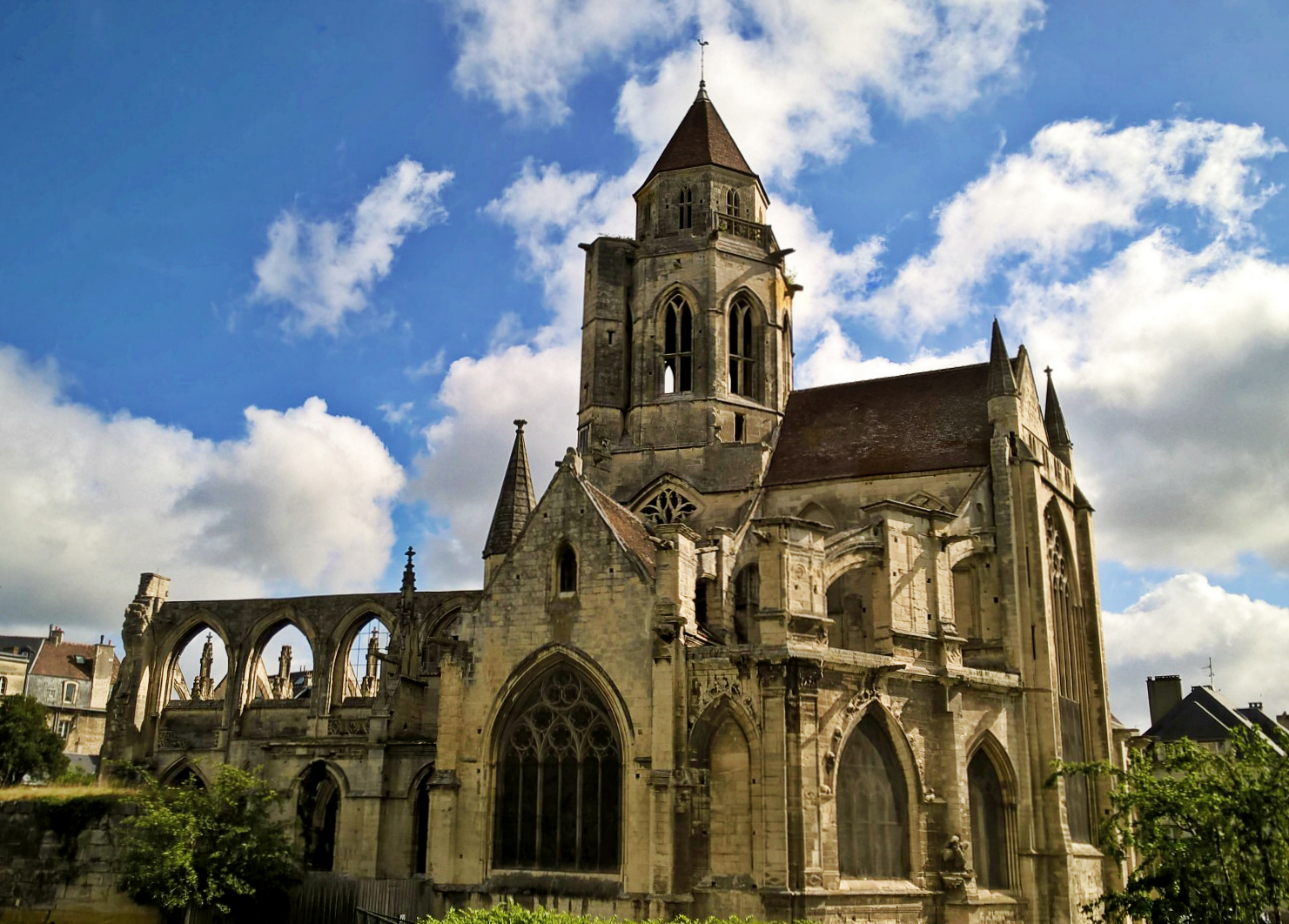
This is one of the oldest buildings in Cannes. The chapel is located next to the Forville Market. It was built either at the end of the 16th or at the beginning of the 17th century. The Chapel of Mercy is small: about 26 meters long and 9 meters wide. Its architecture is simple, even austere. The only bright spot is the spire on the low bell tower. It is decorated with glazed tiles. Initially, this structure had a longer name — the chapel was dedicated to Our Lady of Mercy of the Seashore.
Over time, this name was given to the church, and the chapel’s name was shortened to the current one. Another name is the Chapel of the Black Penitents, after the brotherhood that was disbanded in the 19th century. At that time, there were enough brotherhoods in France named according to various colors. They preached asceticism, repentance, and abstinence. The chapel is active, with masses conducted in Latin. The interior is just as simple and austere. The entrance is from Rue de la Miséricorde.
Forville Market
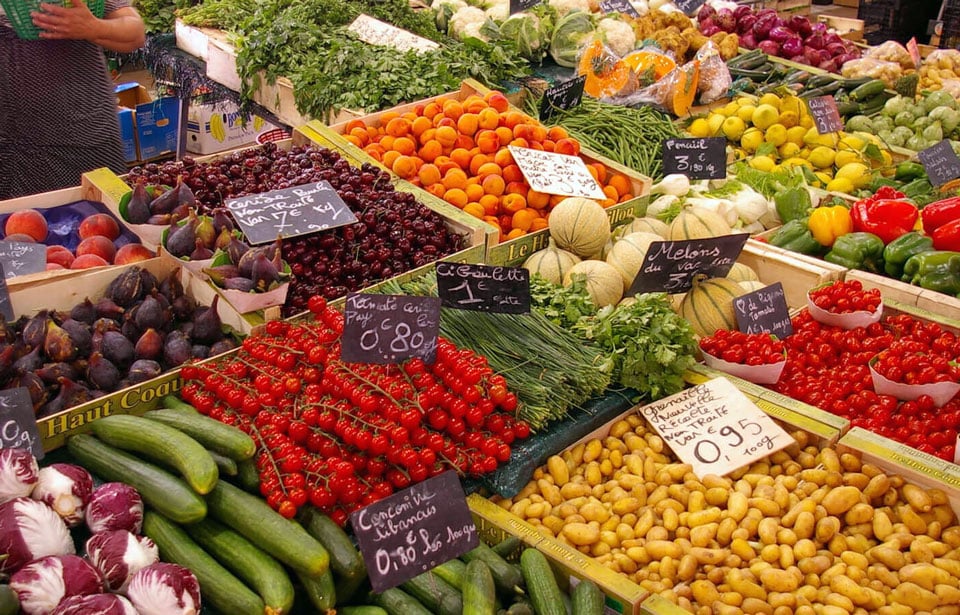
Be sure to visit this market to truly feel the spirit of France. It operates daily, except Mondays, from 7 AM to midnight. To acquire the highest quality goods, it is better to come in the morning, but in the evening, you can hope for discounts. Here you can buy whatever your heart desires. Freshly cut flowers, seeds and bulbs, meat and fish, cheese and vegetables, spices, and exotic fruits.
If you speak French, it is worth bargaining; they will meet you halfway and lower the price. The atmosphere at the market is so friendly that you simply can’t leave without buying anything. They will let you taste wine or cheese, give you seed samples, and tell you where the fruits come from. The famous market makes the impression of a real cornucopia.
Goods are available for every taste and budget. You can buy delicacies or just greens for a salad. But the impression will be unforgettable. If you are driving, remember there is parking next to the market. The surrounding streets are also very picturesque, and it’s worth wandering around, admiring the old houses, and sitting in a cafe.
Church of Our Lady of Hope
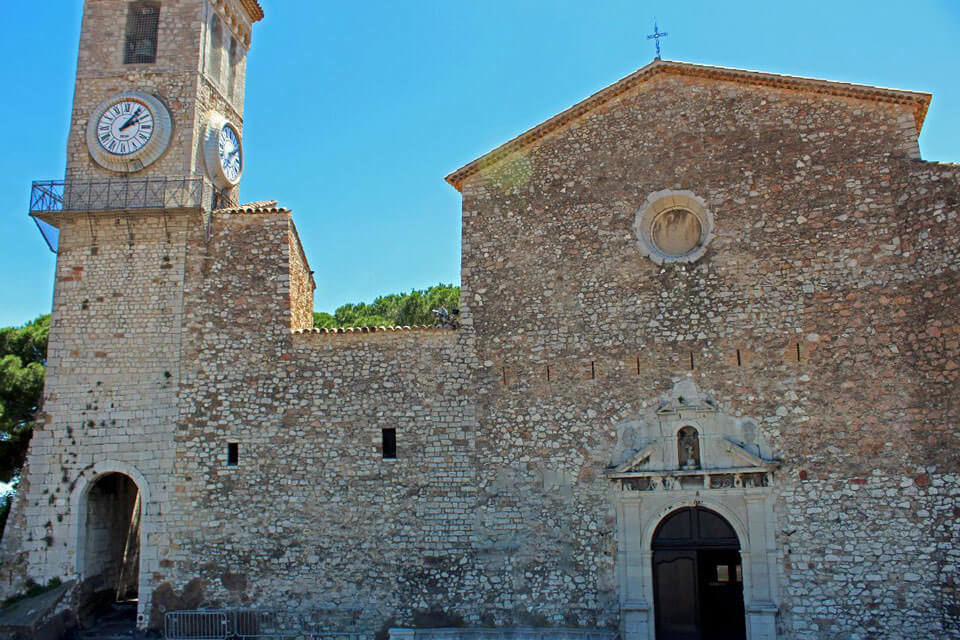
An old Catholic church is located on the top of Suquet Hill. Residents of Cannes can see its bell tower from afar. Previously, there was only one small church here (the former chapel of Saint Anne), and by the 16th century, it had become too small for Catholics wishing to attend mass. They planned to build a new church in a few years, but the process actually took more than a century.
The reasons for this were plague epidemics and numerous wars. The new church could only welcome its first parishioners in 1641. It was built in the Gothic style from brown stone. A rectangular bell tower stands out, with a clock on it. The interior decoration is also strict. However, there are beautiful frescoes by Georges Roux and gilded statues of the Virgin Mary (18th century) and Saint Anne (15th century).
In June, musicians perform on the church porch during the popular “Musical Nights of Suquet” festival. You can not only listen to beautiful melodies but also enjoy the panoramic view of the city from the height. At Christmas, a Nativity scene is set up here, which will delight both children and their parents. Spectators will see how day turns into night, how angels fly, and how domestic animals walk. In short, the sacred story truly comes to life.
Galerie 1414
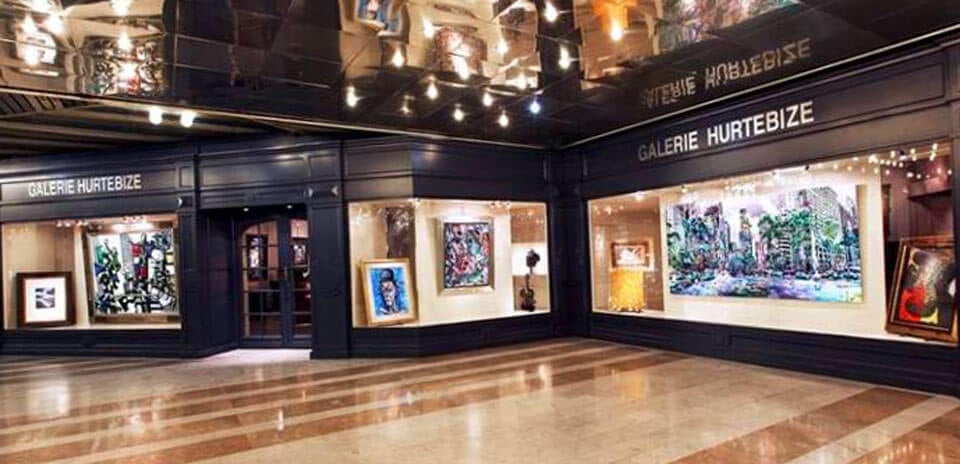
Here you can buy the most unusual gifts for your loved ones. The gallery features contemporary paintings. It is owned by artist Coco Trabiche. You can admire some paintings and purchase others. The paintings are done in different genres. There are landscapes, still lifes, and portraits. In some cases, you can even order a painting on a specific theme. French artists’ paintings have a special charm, and undoubtedly, the works purchased here will adorn your home or office.
Musée de la Castre
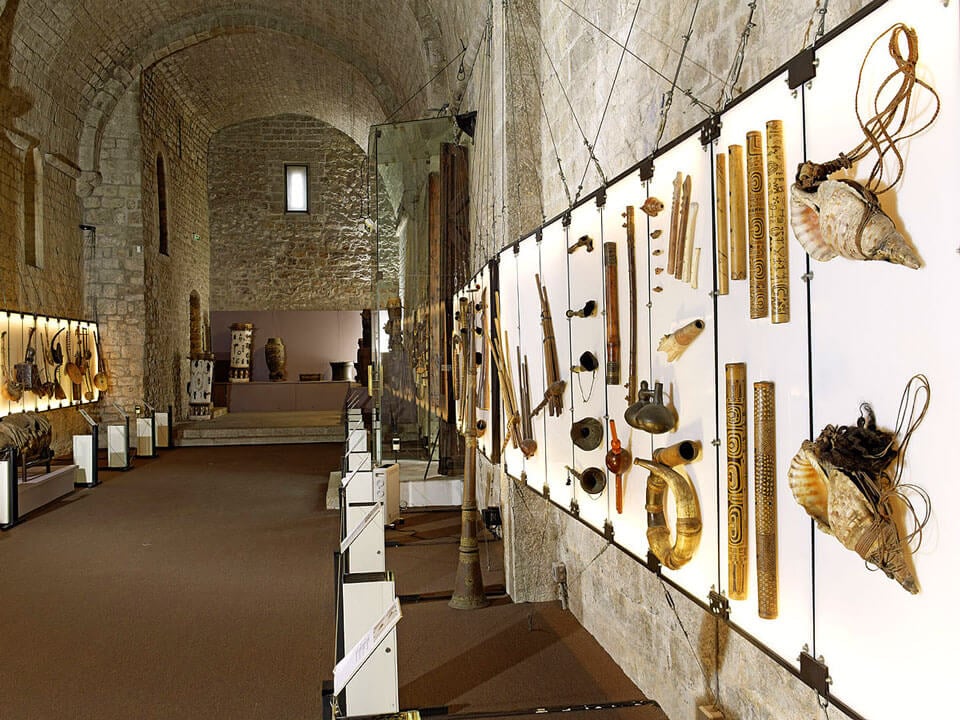
The museum is located on Suquet Hill, in an old castle. Not much is left of the original castle built here by monks in the 11th century. Practically only ruins. They were not completely demolished only because the walls were too thick, and the work would have required significant effort. What can travelers see? The cultural center owes its exhibits to travelers Gine de la Cloche and Baron Liklama, who found them during excavations in ancient cities of Egypt, Greece, and Rome.
The museum also presents the art of Aboriginal Australians, Africans, and Americans. The paintings by artists who lived in Provence in the 18th and 19th centuries are also impressive. Their canvases depict landscapes and moments of city life. In the church of Saint Anne, you can admire musical instruments — the extensive collection includes exotic specimens. The road leading to the museum is beautiful. It passes through a picturesque park. While in the castle, don’t miss the chance to climb the tower and enjoy the panoramic view of the city.
Promenade de la Pantiero and Old Port
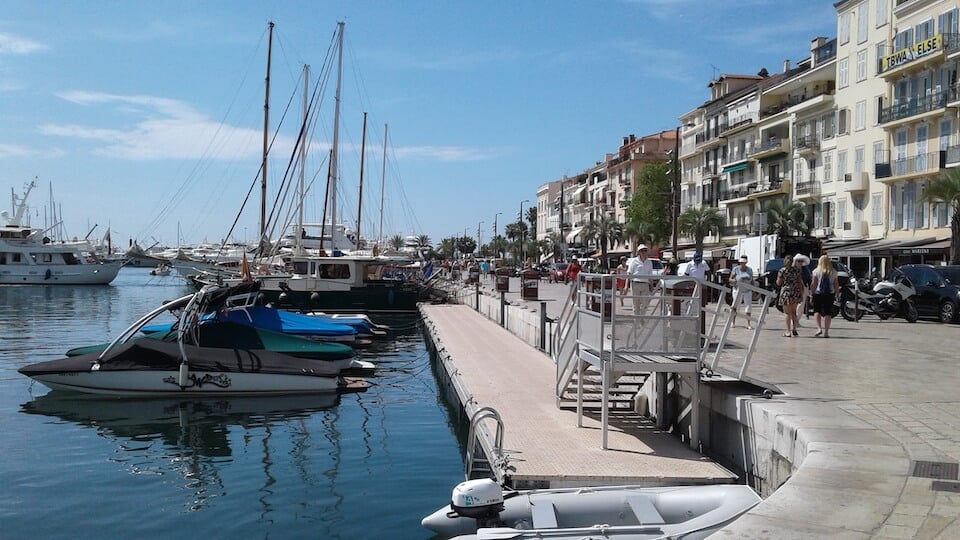
Promenade de la Pantiero is the oldest part of the Old Port. It was built in the mid-19th century when Cannes was still a small fishing village. Today, you can still see the fishermen’s boats here. But next to them, yachts belonging to wealthy and famous people are moored. Up to 500 small vessels can find shelter here. It was thanks to the port’s arrangement in the 1830s that Cannes began to develop rapidly.
At that time, Chancellor of England Peter Brougham was delayed in Cannes due to a cholera epidemic. He liked the town so much that he built a house here and, at the request of the locals, laid the port. In 1838, Promenade de la Pantiero appeared. In 1898, Prince Albert Edward laid the first stone of the pier’s foundation. The future King of England made Cannes his residence.
Yachts of noble people began to arrive here. Starting from the 1920s, prestigious competitions — the “Royal Regatta” — have been held here annually. The best athletes in the world participate. Cannes became an elite and yet popular resort. You can also take a boat from the port and travel to the Lérins Islands.
Grand Jas Cemetery
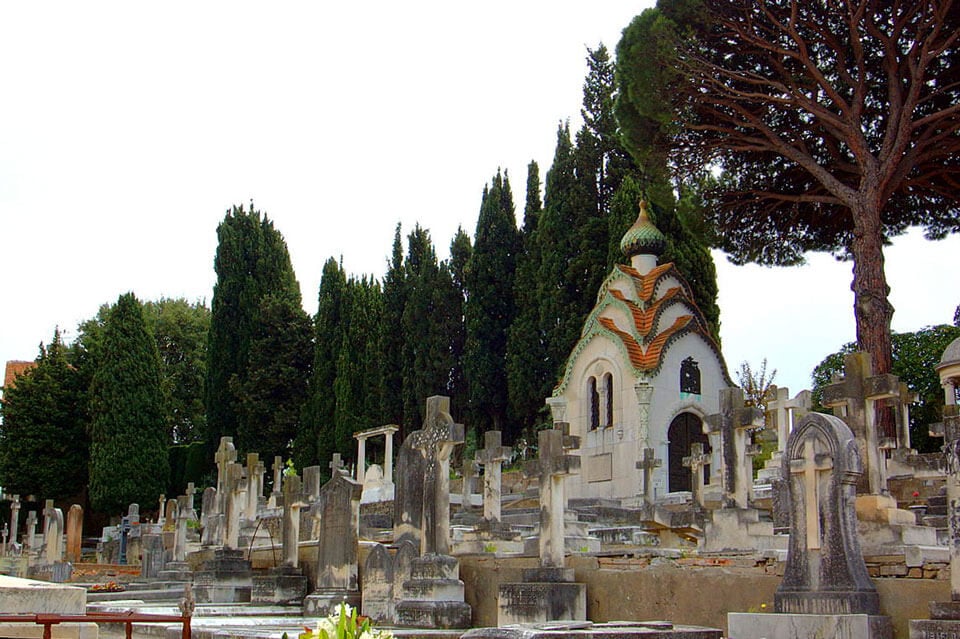
One of the most famous cemeteries in France, it is worth visiting not only to pay homage to famous graves. The cemetery has long turned into a beautiful park, and many monuments are real works of art. The cemetery is located in the northwest of the city and appeared here in the mid-19th century. Its area is quite extensive — about 9 hectares. The best decision would be to visit the administrative office at the cemetery and hire a guide.
Otherwise, you might miss the most interesting parts. For example, the grave of Prosper Mérimée. You can’t leave without seeing the final resting place of the famous Karl Fabergé — the creator of unique jewelry.
Olga Picasso, the first wife of the great artist, is also buried here. As well as pilot Nikolai Popov, who was among the first to explore new routes in the early 20th century. There are also Russian soldiers who died from wounds received during battles in World War I. The cemetery is essentially a museum, and a guide can tell you many stories. Locals come here to stroll along the picturesque paths, enjoy the peace and quiet, and pay their respects to great people.
Île Sainte-Marguerite
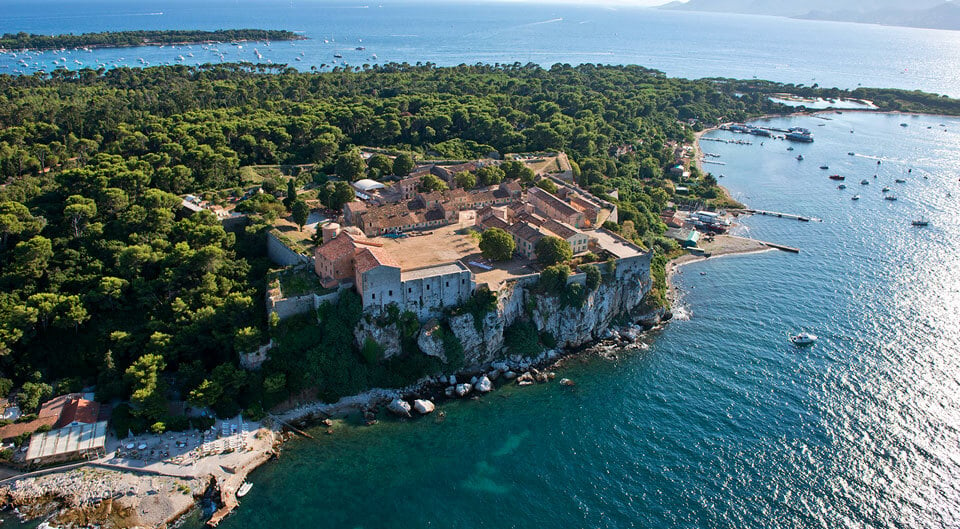
This sea trip will be very interesting. The island is quite small — about 3 km wide, but there are many attractions. First of all, there is the chapel of Saint Margaret of Antioch, built by the Knights Templar. Moreover, there is talk of a certain Saint Margaret who led the nuns living here during her lifetime.
Historians do not rule out that this is a fictional character. In the early 17th century, the island became the property of the Duke of Chevreuse. The construction of Fort Royal began here, and the French and Spanish fought fiercely for it. The French regained it, and the fort became a prison. The local population lived well, as it had to meet the needs of the garrison stationed in the fort. It was here that the famous prisoner — the Man in the Iron Mask — languished for 11 years.
Who was he? The brother of King Louis XIV or his illegitimate son? The mystery remains unsolved. The only person to escape from the island was Marshal Bazaine. You can also visit the Museum of the Sea, look into the village where fishermen live, and take a walk in the botanical garden where unusual trees with twisted trunks grow. Note that smoking is prohibited on this island.
Thus, even in one day in Cannes, you can see a lot. And, of course, after such a long walk and getting to know the main attractions, you will forever love this wonderful city.

